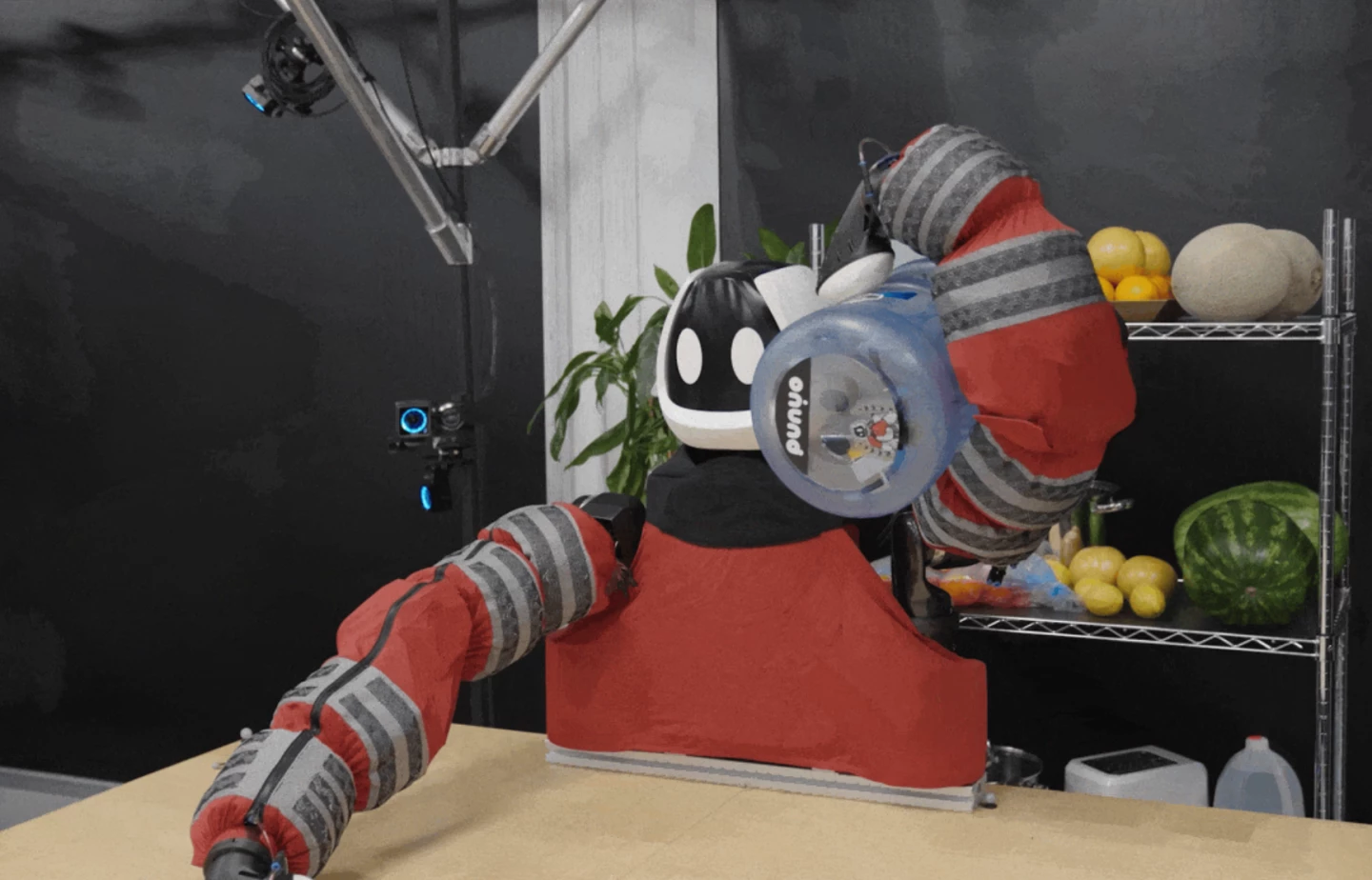Most humanoid robots pick things up with their hands – but that's not how we humans do it, particularly when we're carrying something bulky. We use our chests, hips and arms as well – and that's the idea behind Toyota's new soft robot.
Punyo, as it's called, is a torso-up humanoid research platform. First and foremost, it's adorably Japanese, with a cute and approachable looking face and a cuddly, husky look reminiscent of the Baymax robot from Disney's Big Hero 6. Adding to the cuddle factor, he appears to be wearing a big, cosy-looking sweater.
And indeed, this "sweater" is highly hug-focused. It's made using grippy materials that provide a squishy, compliant layer over Punyo's hard metal skeleton, and the fabric is loaded with tactile sensors that allow it to feel exactly what it's hugging, be it a person or an item that it's carrying.

Dexterous hands may be on the roadmap, but right now Punyo rocks a pair of... maybe inflatable hooves is the right word here? Toyota calls them paws, and there's not even so much as a claw for gripping. They terminate in deformable, inflatable pads, with dot patterns on the interior monitored by cameras, so that when they touch something and the pattern deforms, the robot can see and know it's touched something.
The arms have additional softness built in thanks to arrays of 13 air-filled bladders reaching from shoulder to wrist, which can be individually pressure-regulated for optimal stiffness depending on what the robot's up to.
Through teleoperation, Toyota Research Group roboticists have been training Punyo to handle a number of different large objects. Sometimes, this is about leaning forward, hugging the items to its chest, and leaning back to lift them. Other times, it's more interesting carrying techniques, like slinging a water jug up onto its shoulder and holding it steady from above.
There's also the ability to really heap things up in the robot's arms, and watching it move things around, it definitely handles large items in a more natural way than other bots.
In September, Toyota showed off a remarkable advance in robot learning, in which robots were given a few examples of how to do dozens of different kitchen tasks – including spreading things on bread, peeling potatoes, rolling out pizza dough and flipping pancakes with a spatula – and then, through a diffusion policy learning system, the robots went through the tasks in simulation over a few hours, and were then able to repeat what they saw in a flexible and autonomous fashion.
Punyo is using the same kind of AI learning process, with the added element that the team is also able to dial in variables around how closely to follow the example motions, or how much priority to give things like speed, efficiency or the criticality of getting the job done right.
It's certainly a different approach than what we've seen from other humanoids, and while this kind of huggy lifting won't be appropriate in every situation, it's going to be very relevant in some. Particularly once these machines are in our homes, holding our babies... Now there's a thought to end on!
Source: Toyota Research Institute






